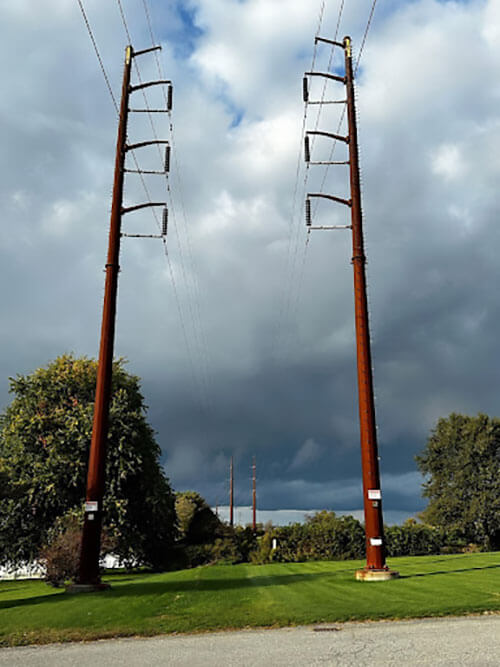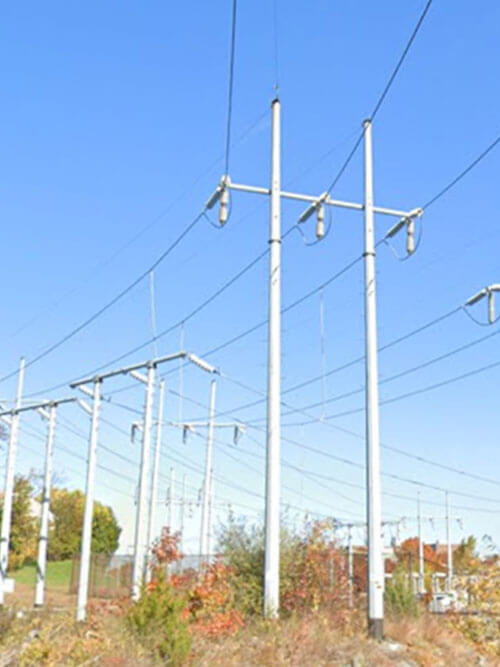Project Overview
Overview
Beginning in fall 2024, Rhode Island Energy (RIE) is planning upgrades to the M13/L14 transmission lines that travel between Dexter Substation (Freeborn Street, Portsmouth) and Canonicus Substation (Hooper Street, Tiverton). Upgrades will also be made between Tiverton Substation (Fish Road, Tiverton) and the Massachusetts/Rhode Island state line. This work is being performed to modernize the local transmission infrastructure for greater reliability across Tiverton and Aquidneck Island. The new steel poles will be, on average, 17.5 feet taller than the current structures.
Construction activity will begin in the fall of 2024 and the project is expected to be complete and in service by spring 2026. All the work will take place within RIE’s existing right-of-way (ROW), with only select access points being located off-ROW. We are utilizing a laydown area off of Souza Road in Tiverton. There will be no disruption in electrical service to RIE customers while the work is being performed. Final restoration is expected to be complete in the spring of 2026.
Construction Phasing
Construction of the M13/L14 Reliability Upgrade Project will take place over the course of several phases. Details about the timing of each phase by location will be communicated to those along the project route throughout the project, but the general plan entails:
Forestry Work: To prepare the ROW for construction access, our forestry team will complete mowing and tree work within the boundaries of the ROW. Any forestry work that impacts vegetation outside the ROW will be coordinated with landowners prior to the work being completed.
Civil Work: During this phase, RIE contractors will install crushed stone and construction matting (either timber or composite) to protect the ground from the movement of heavy equipment, as well as environmental controls to protect sensitive areas along the route. The matting will be installed to create temporary access roads, as well as work pads around each new structure for the staging of equipment. Crews will also complete the drilling work necessary to install the new structures and pour cement footings in the locations where they are needed.
Electrical Work: Once the civil work is completed, the contractors will move on to installing the new towers and running the new wires. Poles will likely be made of galvanized steel. Preliminary engineering design features a mixture of poles types, include single-circuit and double circuit monopoles. The wires will be pulled, using dedicated equipment, from various locations along the ROW. The current structures and wires will be removed following the installation of the new equipment.
Restoration: Following the installation of the new towers and wires, and the removal of the retired materials, crews will shift their focus to restoring the ROW. Because the matting will have provided a level of protection, restoration in most areas is limited to clean up and lawn/vegetation restoration as needed (most locations where matting was located will naturally restore over time). In some locations, we may need to discuss replanting of trees, typically where additional access needs are located. Our team will address these needs on a case-by-case basis with property owners as we draw closer to this phase of the work.

Proposed orientation of most new structures with wires placed in an inward-facing orientation. Angle structures will vary slightly.

Proposed galvanized steel material (for aesthetic representation only).
